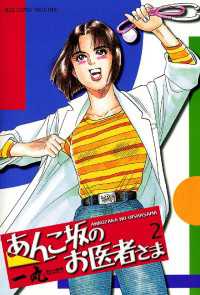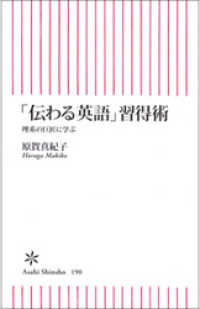基本説明
Drawing on his thirty-five-year engagement with the artist, Thomas DaCosta Kaufmann begins with an overview of Arcimboldo's life and work, and then trains its focus on the celebrated composite heads. In addition to probing the humanistic, literary, and philosophical dimensions of these pieces, Kaufmann explains that they embody their creator's continuous engagement with nature painting and natural history.
Full Description
In Giuseppe Arcimboldo's most famous paintings, grapes, fish, and even the beaks of birds form human hair. A pear stands in for a man's chin. Citrus fruits sprout from a tree trunk that doubles as a neck. All sorts of natural phenomena come together on canvas and panel to assemble the strange heads and faces that constitute one of Renaissance art's most striking oeuvres. The first major study in a generation of the artist behind these remarkable paintings, "Arcimboldo" tells the singular story of their creation. Drawing on his thirty-five-year engagement with the artist, Thomas DaCosta Kaufmann begins with an overview of Arcimboldo's life and work, exploring the artist's early years in sixteenth-century Lombardy, his grounding in Leonardesque traditions, and his tenure as a Habsburg court portraitist in Vienna and Prague. "Arcimboldo" then trains its focus on the celebrated composite heads, approaching them as visual jokes with serious underpinnings - images that poetically display pictorial wit while conveying an allegorical message.
In addition to probing the humanistic, literary, and philosophical dimensions of these pieces, Kaufmann explains that they embody their creator's continuous engagement with nature painting and natural history. He reveals, in fact, that Arcimboldo painted many more nature studies than scholars have realized - a finding that significantly deepens current interpretations of the composite heads. Demonstrating the previously overlooked importance of these works to natural history and still-life painting, "Arcimboldo" finally restores the artist's fantastic visual jokes to their rightful place in the history of both science and art.
-

- 電子書籍
- N【分冊版】 6 電撃コミックスNEXT
-

- 電子書籍
- 必勝ダンジョン運営方法(コミック) 分…
-

- 電子書籍
- 名探偵コナン~メインキャストセレクショ…
-

- 電子書籍
- あんこ坂のお医者さま(2) ビッグコミ…
-

- 電子書籍
- 「伝わる英語」習得術 理系の巨匠に学ぶ



